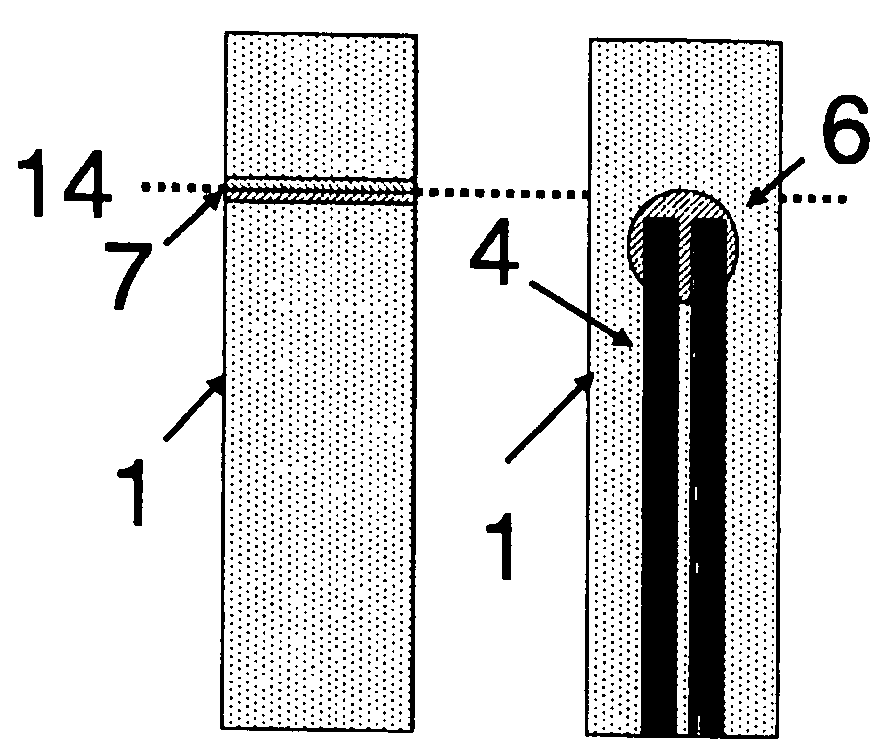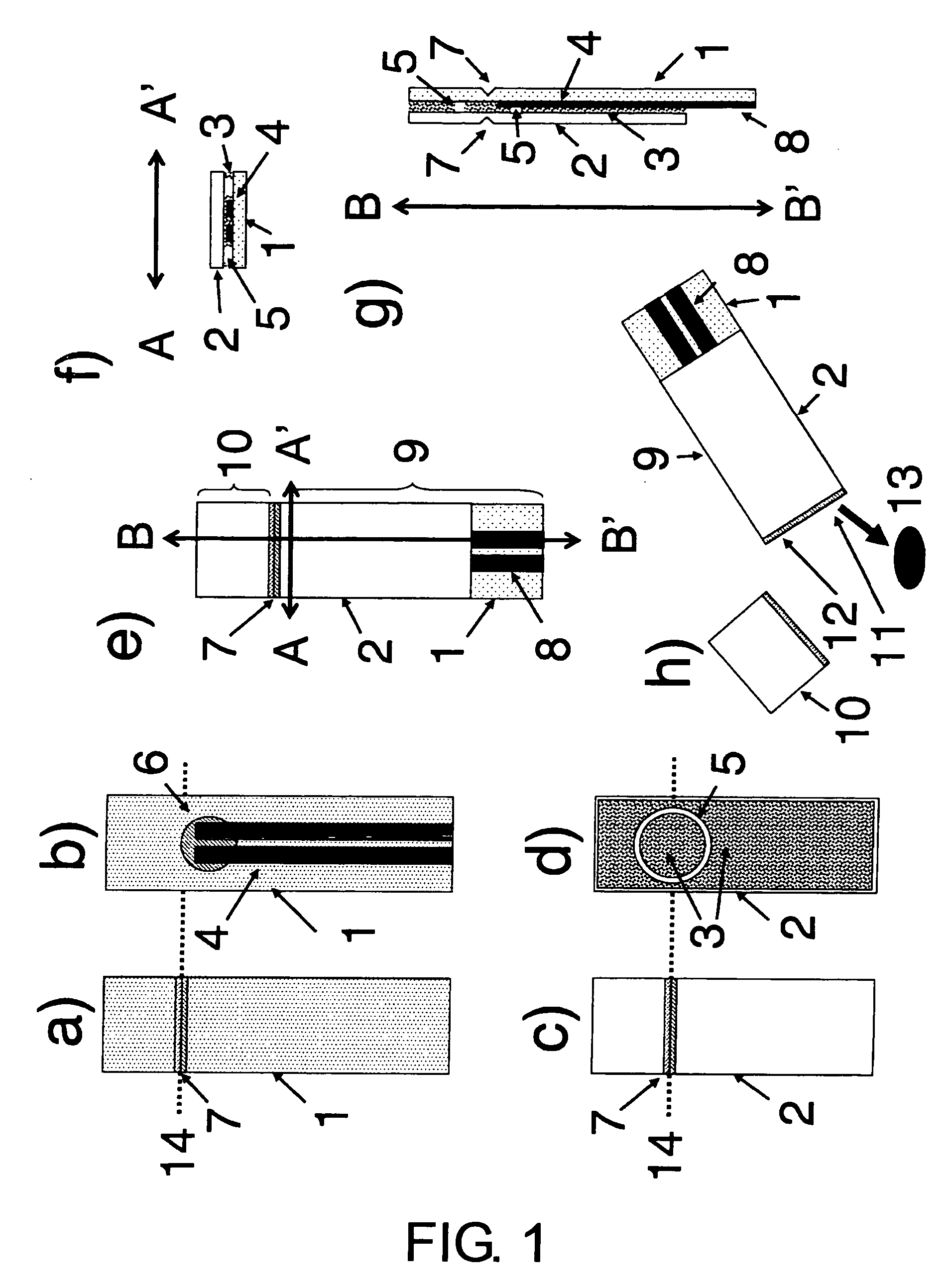Biosensors
a biosensor and sensor technology, applied in the field of biosensors, can solve the problems of difficult to maintain a dry state inside, complex packaging steps, and high cost, and achieve the effect of excellent sealing ability
- Summary
- Abstract
- Description
- Claims
- Application Information
AI Technical Summary
Benefits of technology
Problems solved by technology
Method used
Image
Examples
example 1
[0417]FIG. 1 shows a representative example of the biosensors of the present invention. FIG. 1 is an example of a biosensor of the present invention in which a cross section of sensor portion 10 appears on cutting the sealed cap portion that does not include an electrode, where the cross section of the sample-feeding path simultaneously forms a sample-inlet port and air-discharge port and is exposed to the outside for the first time.
[0418]FIG. 1a shows the outside of rectangular substrate 1 of a typical biosensor. On top of substrate 1 is a horizontally made V-shaped notch 7, which becomes a cutting plane line. Notch 7 is provided so that sealed cap portion 10 of the biosensor can be cut along broken line 14, by bending or the like, when using the biosensor.
[0419]FIG. 1b shows the inside of substrate 1. Both pattern 4, which includes a pair of electrodes, and reagent layer 6 are formed along the substrate 1 centerline, on the inside upper surface of the substrate. Pattern 4, which...
example 2
[0427]FIG. 2 shows a biosensor with an outer structure almost identical to that of FIG. 1, and a different inner structure.
[0428] In FIG. 2a, the wiring section, which includes the terminal of pattern 4 comprising electrodes, is located slightly right of the substrate center. The electrode part for detecting the reaction is located diagonally up on the left side. The reagent layer 6 is formed immediately below broken line 14, on the center line of the substrate, i.e., at the same position as shown in FIG. 1a.
[0429]FIG. 2b shows the inner surface of cover 2. On the inside upper surface of cover 2, the spacer layer, as well as a portion 5 inside the spacer layer, which comprises no spacer, are provided in a trapezoid shape, with the acute angle down. FIG. 2c is an example of a structural diagram where the inner surfaces of substrate 1 and cover 2 are overlapped with the top ends aligned, showing a substrate 1 terminal exposed at the bottom. FIG. 8b shows the inner structure of the d...
example 3
[0432]FIG. 3 shows an example of the biosensor structure in FIG. 2, where the reagent-feeding path is curved from part 26, which becomes the sample-inlet port of the sample-feeding path, to the bent portion 25 (when sealed the sample-feeding path is fan-shaped).
[0433] Since the reagent-feeding path is curved, a sample solution can be smoothly supplied to a position past the electrode part that intersects with the sample-feeding path, and stopped at the bent portion of the sample-feeding path further on. Accordingly, the required amount of sample solution can be reduced.
[0434] In this structure, as for FIG. 2, the fan shape that becomes sample-feeding path 5 shown in FIG. 3b has one angle of the fan at the bottom, and is formed in two directions: vertically, and extending upwards in an arc (see also FIG. 8c). This structure is also formed so the part eventually intersects the reaction-detecting section with the electrode near the arc center. Therefore, as shown in FIGS. 3f and 8c, ...
PUM
| Property | Measurement | Unit |
|---|---|---|
| depth | aaaaa | aaaaa |
| depth | aaaaa | aaaaa |
| depth | aaaaa | aaaaa |
Abstract
Description
Claims
Application Information
 Login to View More
Login to View More - R&D
- Intellectual Property
- Life Sciences
- Materials
- Tech Scout
- Unparalleled Data Quality
- Higher Quality Content
- 60% Fewer Hallucinations
Browse by: Latest US Patents, China's latest patents, Technical Efficacy Thesaurus, Application Domain, Technology Topic, Popular Technical Reports.
© 2025 PatSnap. All rights reserved.Legal|Privacy policy|Modern Slavery Act Transparency Statement|Sitemap|About US| Contact US: help@patsnap.com



